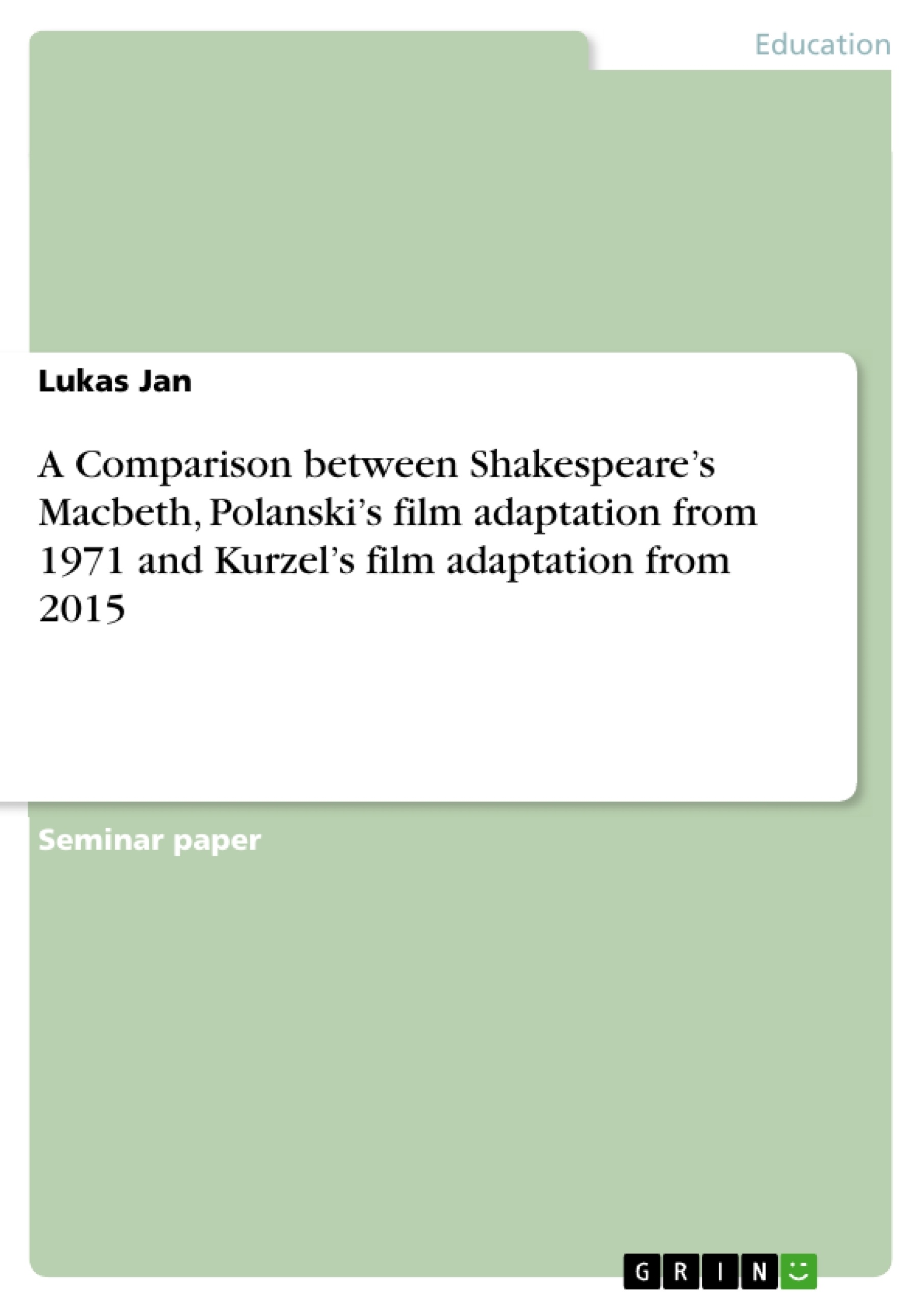In the following, the original play will be compared to the film adaptations by Roman Polanski in 1971 and by Justin Kurzel in 2015. Additionally, the most important scenes and essential details in all three will be analyzed.
Although technological progress affords humanity new possibilities in all sectors, be it communication systems, the news, education, bank transactions, or entertainment, it is inconceivable to dispense with books, letters or newspapers. Especially in the entertainment category, movies today are what novels were decades and centuries ago. They tell stories, history, sciences, etc. and like books they are grouped into various genres. By this observation they seem quite similar and the obvious difference is the textual information transfer of books compared to the audio-visual of movies.
Not only “Macbeth”, but most of Shakespeare’s plays have been turned into films. His plays are surprisingly relevant in contemporary life and school. They are an integral component of general knowledge. The significance of “Macbeth” is obvious when you see how often it was reused. Already by 1908, the director Stuart Blackton produced the first film version of Shakespeare’s tragedy whereon many more followed, the best known by Welles, Kurosawa and Polanski. But how could these two famous directors transfer Shakespeare’s stage play into movies? Is the content adopted accurately or is it falsified? And what changes were accidentally or deliberately made?
Table of Contents
- Introduction and problem
- "Macbeth" - the play in comparison with two film adaptations
- First scene - Act 1 Scene 1 in the play
- Second scene - Act 3 Scene 4 in the play
- Third scene - Act 5 Scene 8 in the play
- Formal differences between play and both film adaptations
- Conclusion
- Bibliography
Objectives and Key Themes
This term paper aims to compare and contrast Shakespeare's play "Macbeth" with its film adaptations by Roman Polanski (1971) and Justin Kurzel (2015), focusing on key scenes and analyzing the differences in content and form between the play and the films. It will explore the directors' interpretations of the original text and analyze the impact of their choices on the overall narrative.
- Comparison of Shakespeare's "Macbeth" with its film adaptations
- Analysis of key scenes and their variations between the play and the films
- Examination of formal differences between stage and film adaptations
- Exploration of the directors' interpretations of the original text
- Impact of directorial choices on the narrative
Chapter Summaries
The introduction establishes the problem of comparing text-based plays with film adaptations and highlights the prominence of Shakespeare's "Macbeth" in both literary and cinematic history. The second chapter delves into the specific comparisons between the play and the film adaptations, focusing on three pivotal scenes.
- The chapter "First scene - Act 1 Scene 1 in the play" discusses the opening scene of the play and the films, analyzing the differences in the depiction of the witches and their dialogues.
- The chapter "Second scene - Act 3 Scene 4 in the play" explores a key scene involving the ghost of Banquo, highlighting the differences in its representation in Polanski's and Kurzel's film adaptations.
- The chapter "Third scene - Act 5 Scene 8 in the play" examines the scene depicting Macbeth's death, analyzing the variations in the portrayal of this pivotal moment in the play and the films.
Keywords
This term paper focuses on the keywords: Shakespeare, Macbeth, film adaptation, Polanski, Kurzel, stage play, content, form, scene analysis, interpretation, narrative.
- Citar trabajo
- Lukas Jan (Autor), 2016, A Comparison between Shakespeare’s Macbeth, Polanski’s film adaptation from 1971 and Kurzel’s film adaptation from 2015, Múnich, GRIN Verlag, https://www.grin.com/document/358805



